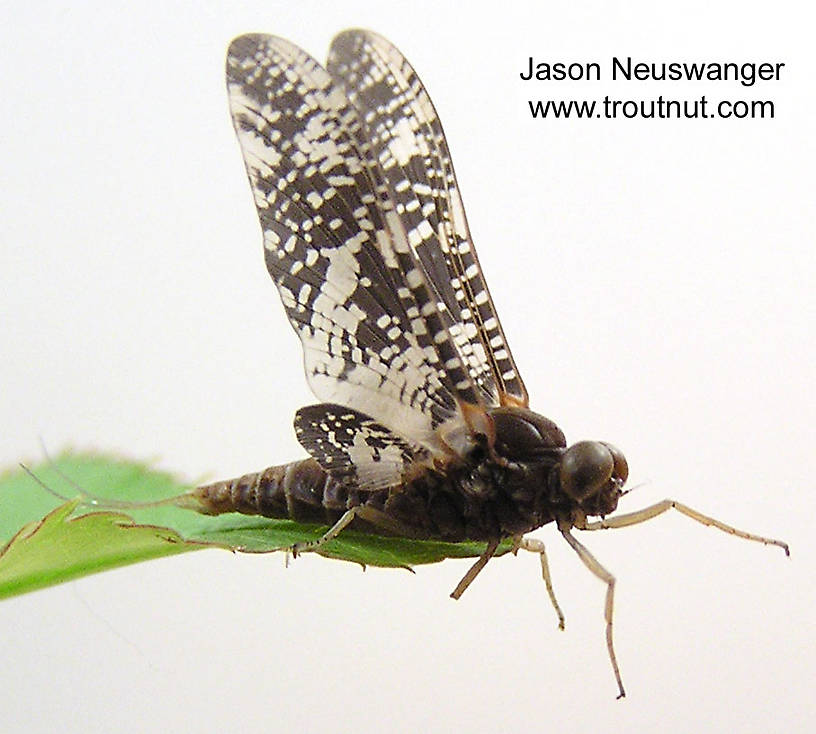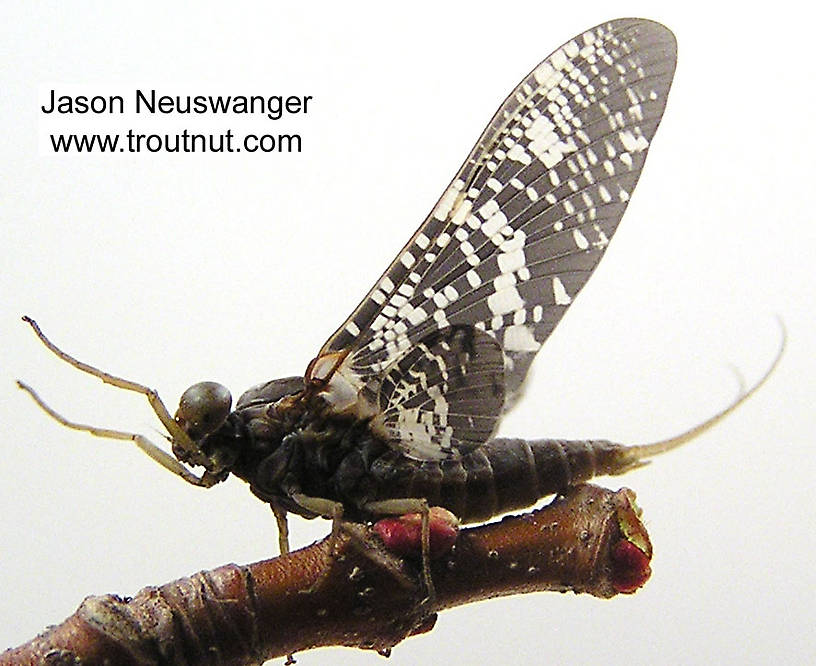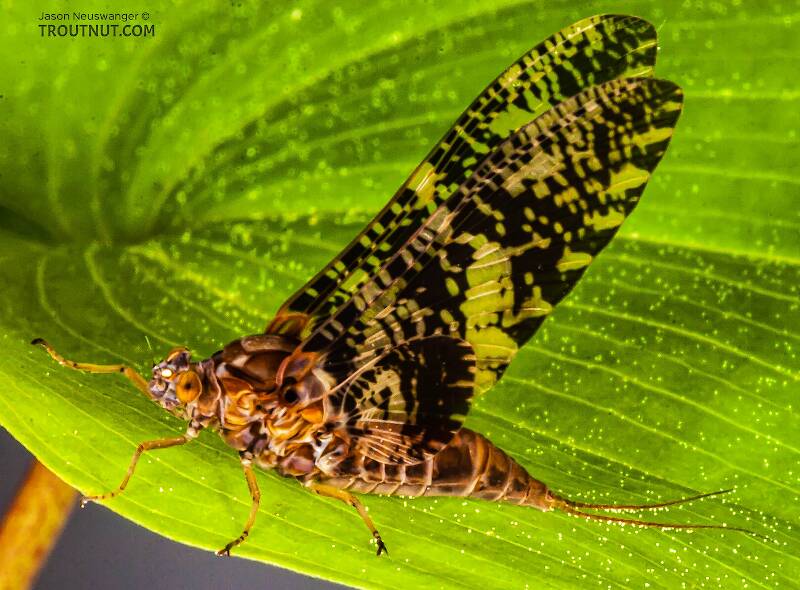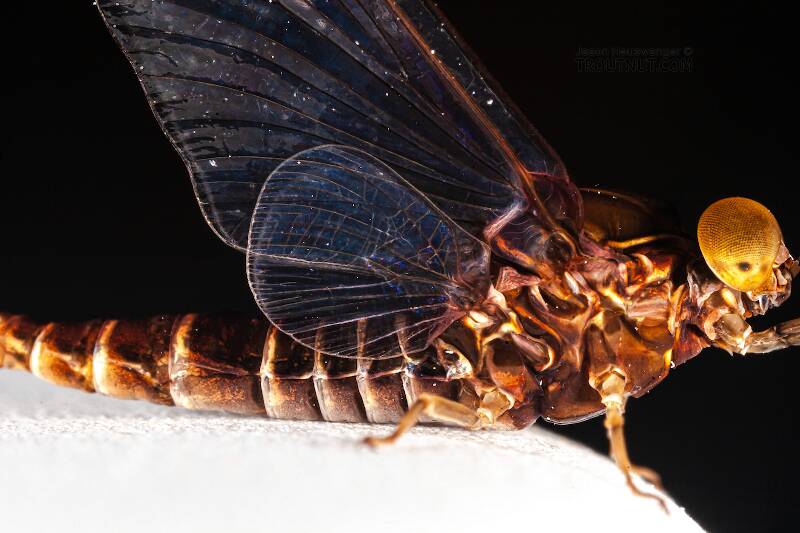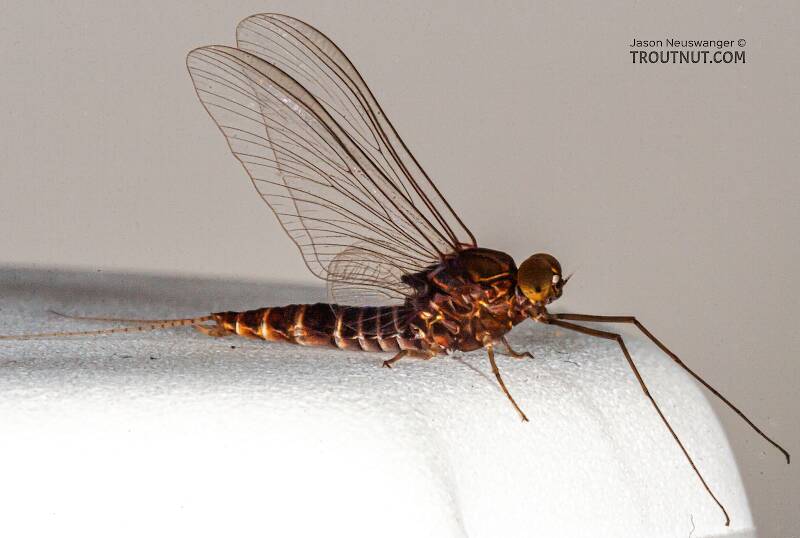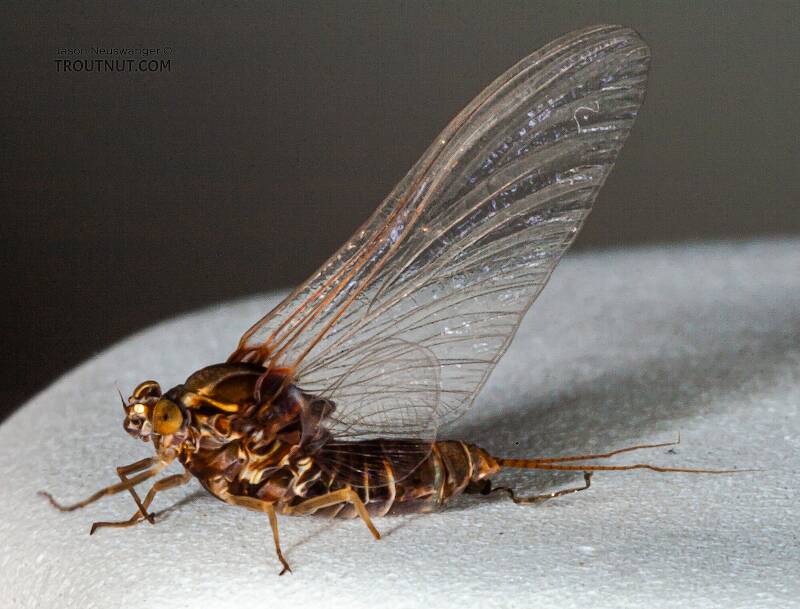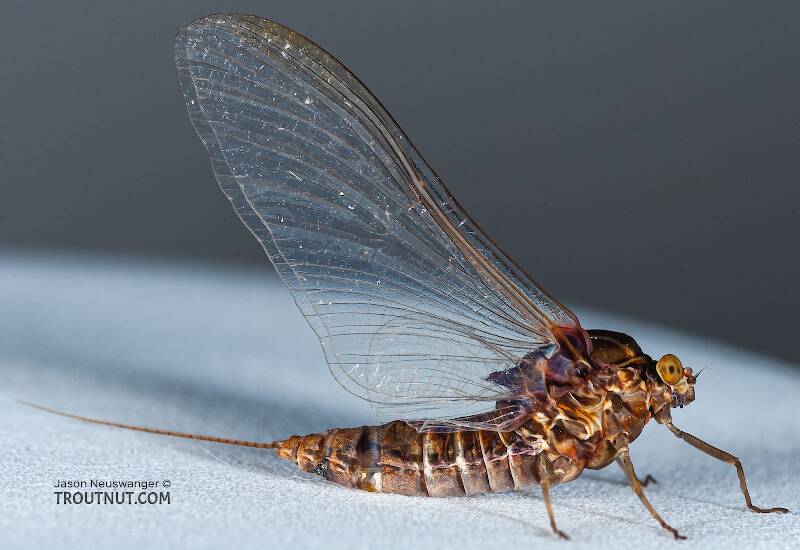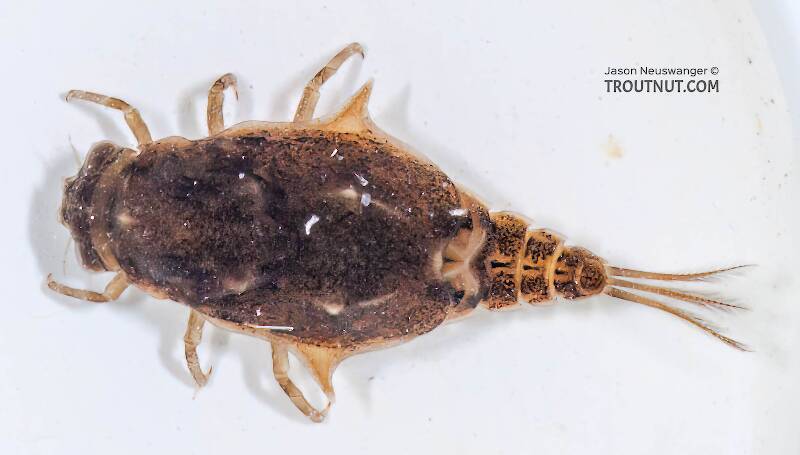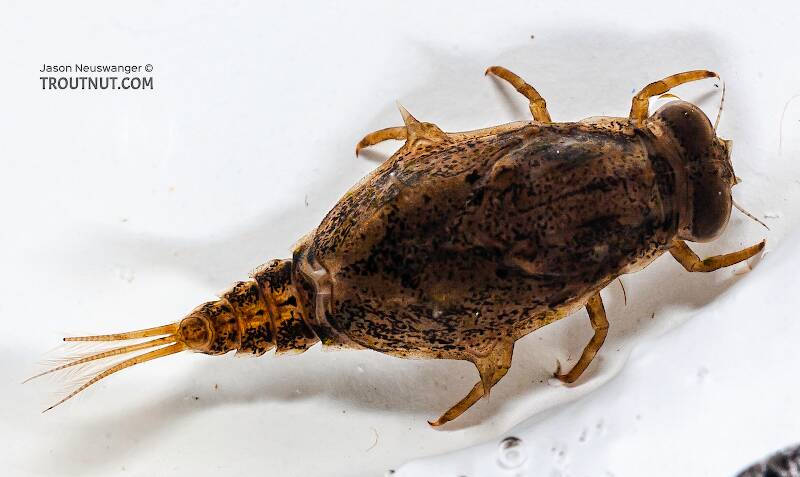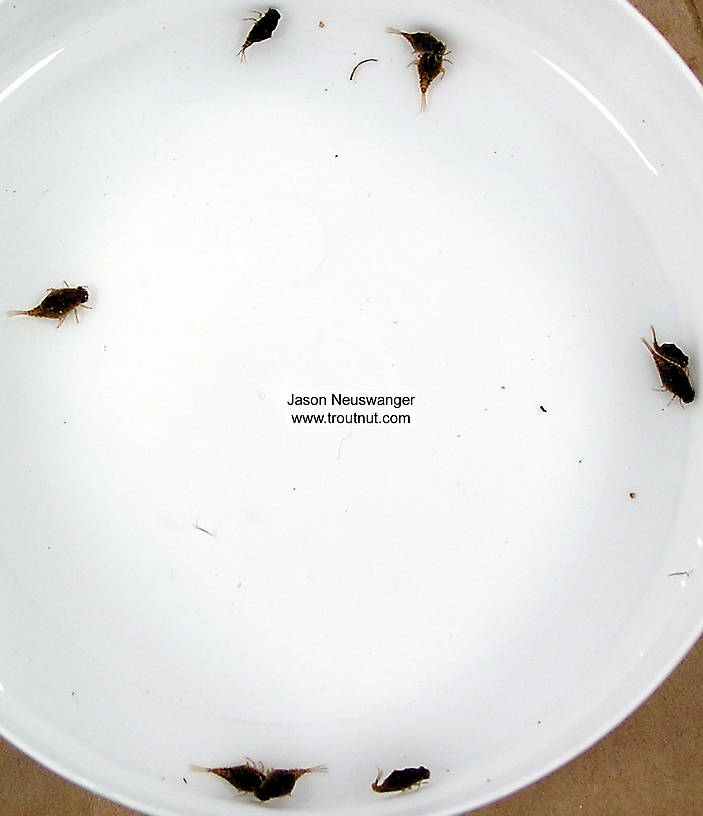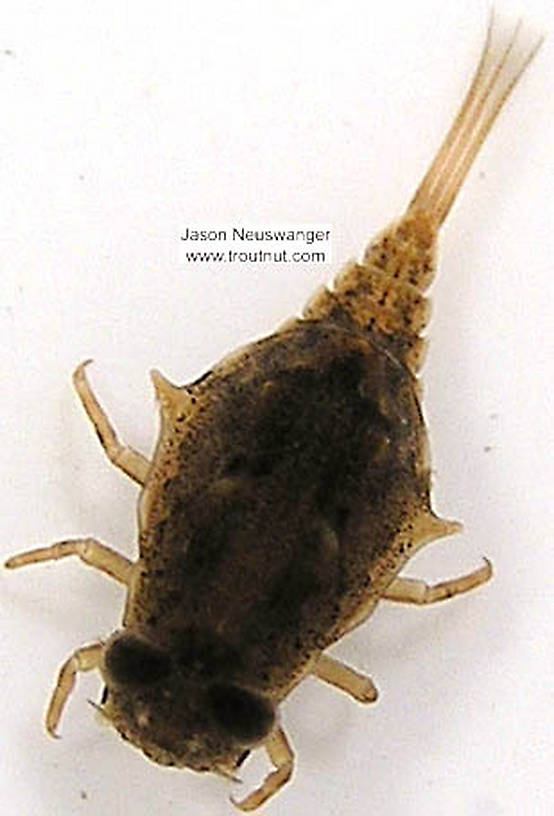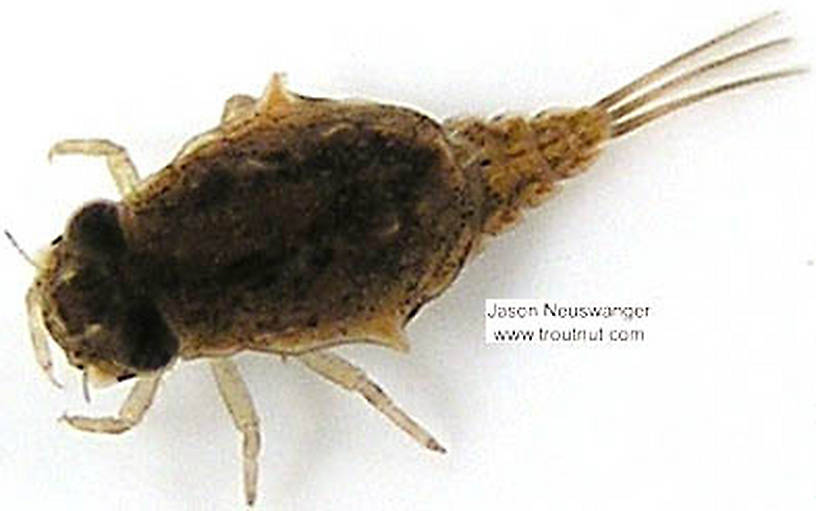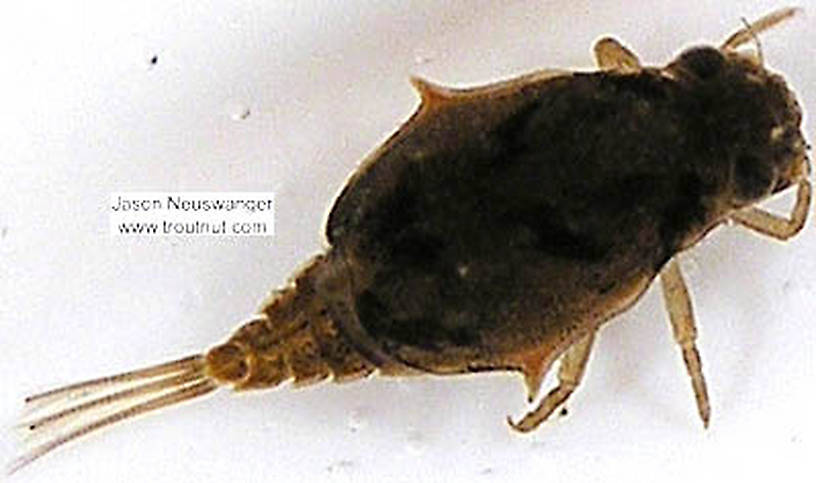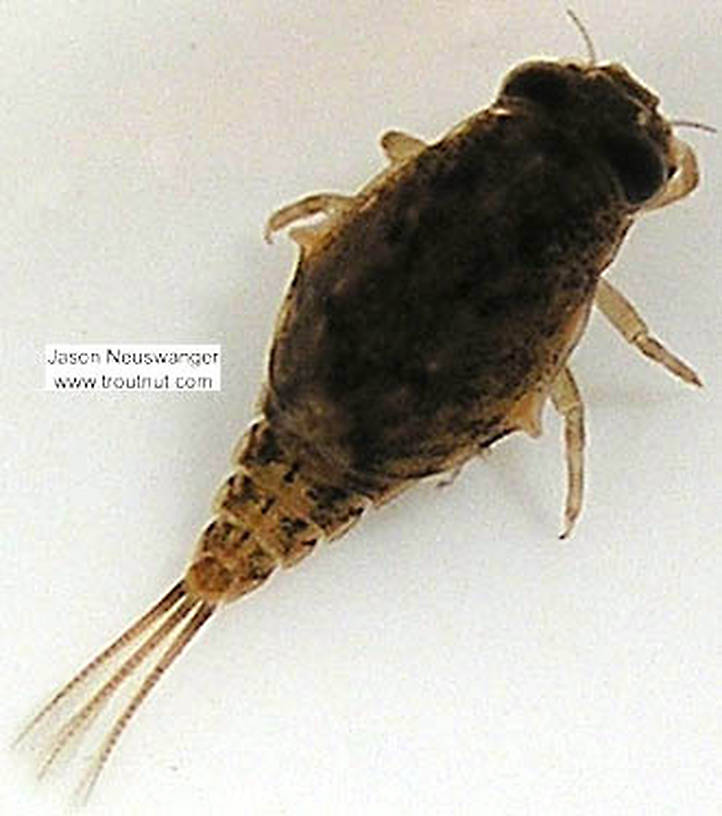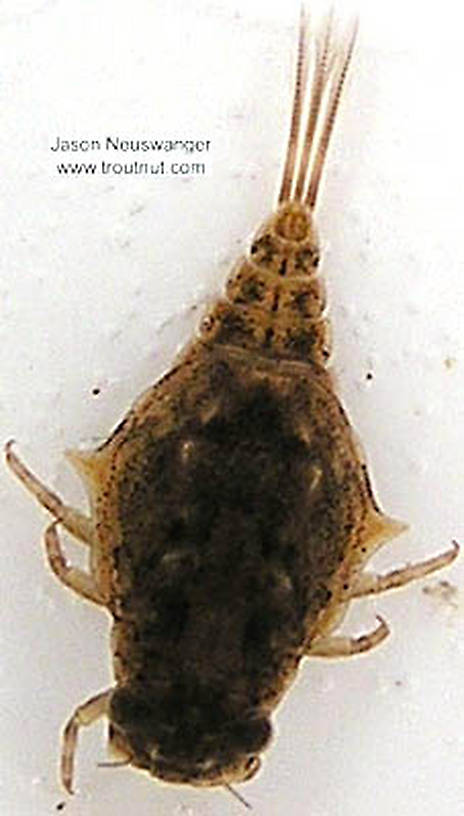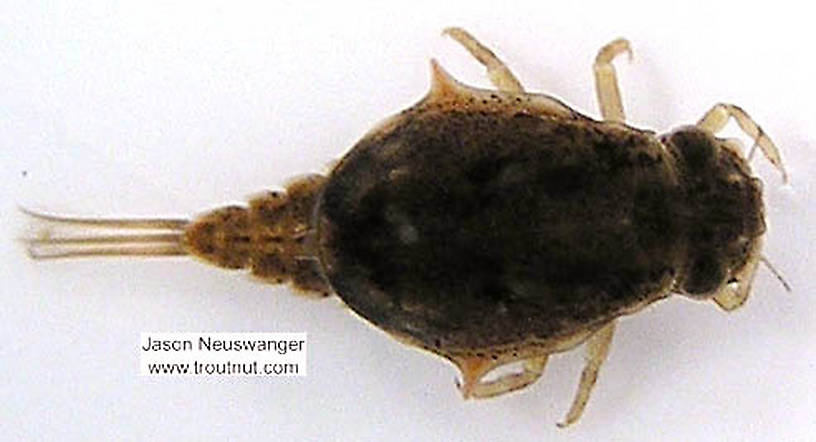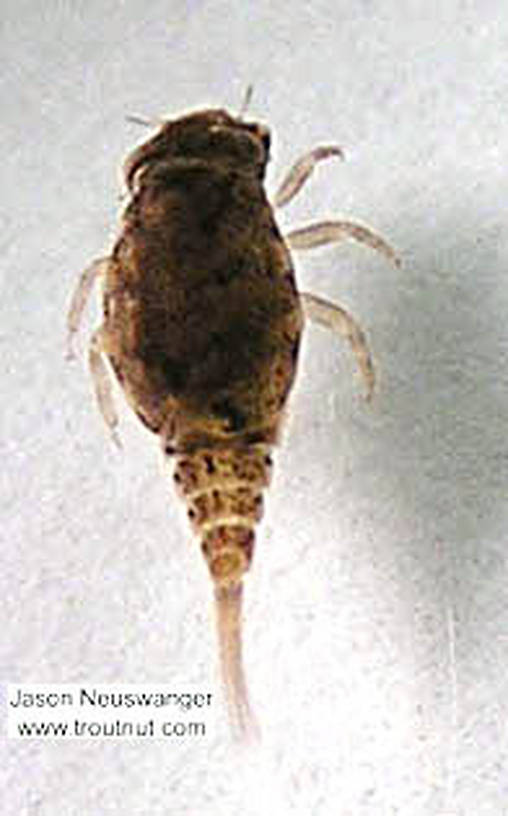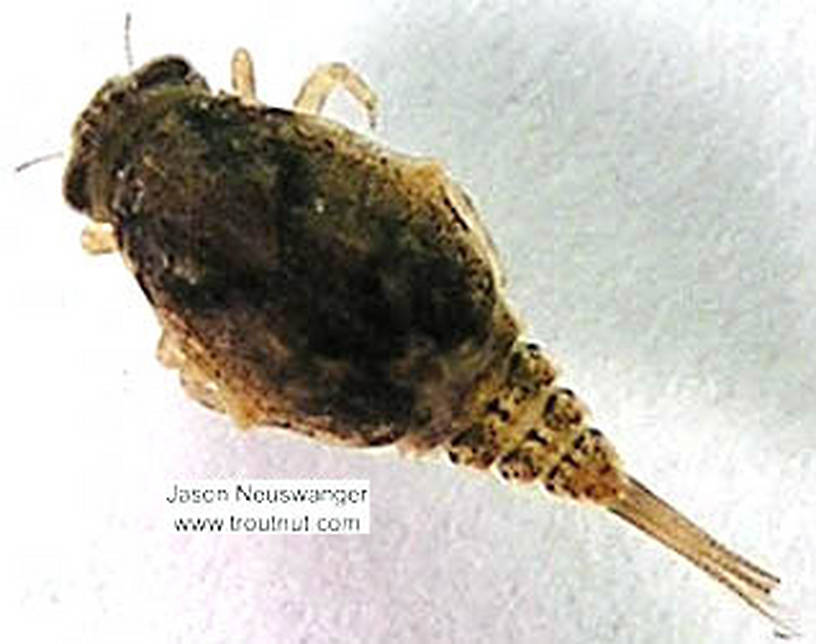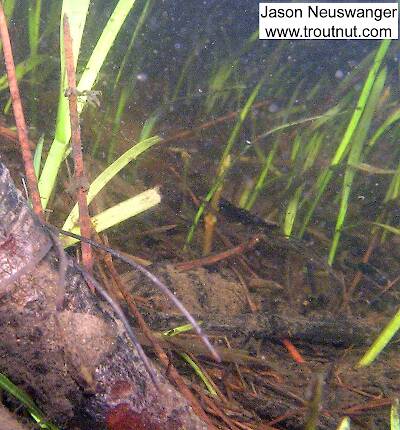
Blue-winged Olives
Baetis
Tiny Baetis mayflies are perhaps the most commonly encountered and imitated by anglers on all American trout streams due to their great abundance, widespread distribution, and trout-friendly emergence habits.


Mayfly Species Baetisca laurentina (Armored Mayflies)
Where & when
This species is very important in parts of northern Wisconsin. In Mayflies of Michigan Trout Streams, the Leonards report that the nymphs are locally abundant in Michigan, but they did not find the adults in fishable numbers.In 20 records from GBIF, adults of this species have been collected during June (45%), May (20%), July (15%), April (10%), and August (10%).
In 3 records from GBIF, this species has been collected at elevations of 3, 20, and 26 ft.
Species Range
Physical description
Most physical descriptions on Troutnut are direct or slightly edited quotes from the original scientific sources describing or updating the species, although there may be errors in copying them to this website. Such descriptions aren't always definitive, because species often turn out to be more variable than the original describers observed. In some cases, only a single specimen was described! However, they are useful starting points.
Male Spinner
Wing length: 10 mm
Abdominal tergites of male imago deep brown, sternites paler brown; longitudinal veins brown.
Head and thorax deep brown; lateral flange-like edge of mesonotum paler; thoracic sternum deep brown. Legs dull amber, the fore legs deeper in color than the second and third pairs. Wings hyaline; longitudinal veins brown; cross veins pale, almost invisible except in the anal region. Abdominal tergites deep brown: sternites paler brown. Forceps dull dirty amber colored; tails pale brownish, the joinings darker.
Nymph
The nymph possesses both dorsal and lateral spines on the mesonotal shield; the frontal projections are reduced to very small blunt tubercles; the genae are very slightly produced only. The dark longitudinal veins separate this species from Baetisca obesa, in which the veins are largely pale.
Specimens of the Mayfly Species Baetisca laurentina
2 Male Duns
1 Female Dun
2 Male Spinners
2 Female Spinners
11 Nymphs
1 Underwater Picture of Baetisca laurentina Mayflies:
Discussions of Baetisca laurentina
It is a tricky hatch to detect. I haven't seen more than a couple of their spinners in the air at a time, though some of my friends report spotting their swarms. Normally for me they just showed up on the water from unseen swarms upstream. They were mixed with spinners from Ephemerella invaria and Maccaffertium vicarium, among others, but the fish were relentlessly selective to the Baetisca laurentina spinners.
I wasted the better part of an hour flinging a sulphur imitation the first time I encountered a Baetisca fall. Like Ephemerella spinners, they can be hard to spot on the water, and they were much more sparse. I finally captured one, noticed the very different body profile, and since I didn't have anything remotely imitating it I continued to catch no fish. I returned the next night with an imitation with a robust, opaque body, and the fish went crazy for it.
I just finished reading through the account by Caucci and Nastasi in Hatches II about how the extremely important Ephemerella invaria sulphur species went unnoticed for decades because it was confused with Ephemerella dorothea. The maddening difficulty of some dorothea hatches was partially explained away once people understood this difference.
Although Baetisca is much less prominent than Ephemerella invaria, I suspect it has similarly been confused with well-known sulphur species in the rare locations and occasions where it is important.
Start a Discussion of Baetisca laurentina
References
- Caucci, Al and Nastasi, Bob. 2004. Hatches II. The Lyons Press.
- Knopp, Malcolm and Robert Cormier. 1997. Mayflies: An Angler's Study of Trout Water Ephemeroptera . The Lyons Press.
- Leonard, Justin W. and Fannie A. Leonard. 1962. Mayflies of Michigan Trout Streams. Cranbrook Institute of Science.
- Needham, James G., Jay R. Traver, and Yin-Chi Hsu. 1935. The Biology of Mayflies. Comstock Publishing Company, Inc.
Mayfly Species Baetisca laurentina (Armored Mayflies)
Species Range
Resources
- NatureServe
- Integrated Taxonomic Information System
- Global Biodiversity Information Facility
- Described by McDunnough (1932)


